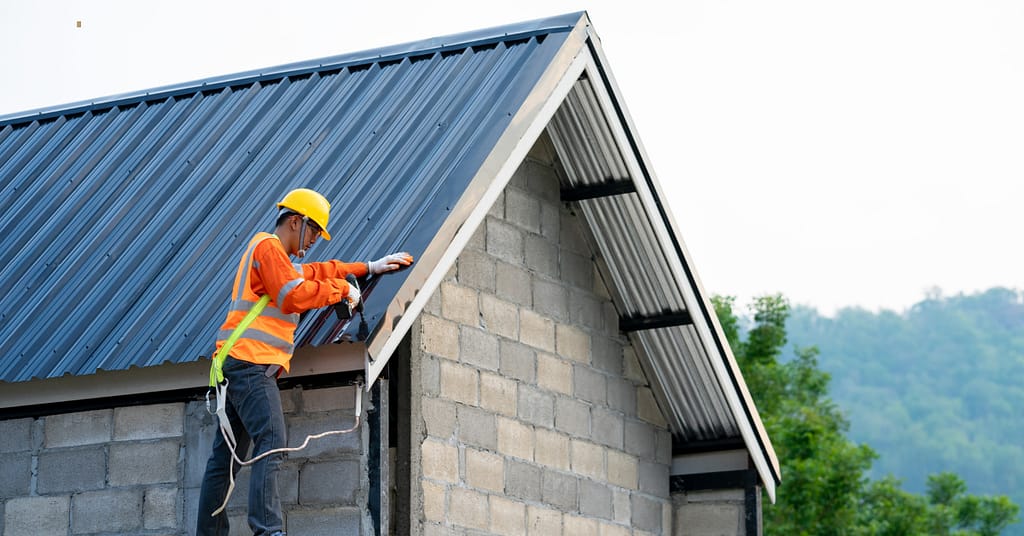
Choosing a Roof in Texas?
While curb appeal is important, a roof plays a much more important role in homes. Especially in Texas. It’s an investment that, if made right, can protect your property from the elements for decades. But choosing the right roof isn’t easy. Homeowners have to stay within their budgets while also investing in a high-quality roof that can protect them from Texas’ unpredictable and extreme weather. That’s why, in this article, we’ll highlight three common mistakes homeowners make when choosing a roof, and show you how to avoid them.
Mistake 1: Disregarding Durability
Make no mistake, Texas has extreme weather. Our heat is hot enough to damage some roof materials, and our cold can bring down powerful hailstorms that can easily take out cheap roofs. Many homeowners choose roofs based on cost: not taking seriously just how costly a roof replacement will be if their budget option can’t take the damage. Also, as we’ll explore in the next section, cheap roofs mean frequent repairs, a lot of inspections, and plenty of other expenses that could have been avoided.
How to Avoid It:
- Metal and Slate: If you’re thinking about top-tier roofs, metal and slate are some of the most durable options for Texas weather. Metal roofing is highly resistant to hail and wind, and its reflective properties help reduce heat absorption, keeping your home cooler in the summer. Slate roofing is also tough, lasting up to 100 years with proper care. Metal and slate are as tough as roofs come. But if you don’t already have a tile or slate roof, your home’s framing may not be strong enough to hold one up.
- Asphalt Shingles: While 3-tab asphalt shingles are cheaper, they offer less durability than architectural or premium options. The latter two options also provide great protection against high winds and storms without breaking the bank. Architectural asphalt shingles are an excellent choice to balance cost and durability, while Class IV premium shingles could provide more durability at a higher cost.
- Wood Shakes/Shingles: Charming as they may be, wood roofs aren’t ideal for extreme weather conditions, and they aren’t allowed in most cities. While treatments help, wood is still porous and prone to damage, rot, and insect infestations, requiring ongoing maintenance. Unless you’re willing to put in the work to maintain them, wood shingles might be cheap upfront, but they aren’t the best investment compared to other options.
In other words, homeowners will most likely find themselves choosing a roof between the three levels of asphalt roofs and metal. For more information, read our comprehensive guide to roof materials.
Mistake 2: Overlooking Long-Term Costs
Some roofs might be cheaper than others in terms of upfront cost, but there’s often a catch. A poorly chosen roof can lead to costly repairs, higher energy bills, and a home that’s a bit more vulnerable to the elements if the damage is severe. In other words, a cheap roof can end up costing you more over the years in repairs, maintenance, and higher energy bills.
How to Avoid It:
- Metal and Slate: Metal roofs are expensive upfront, but they can last 50 to 70 years, require minimal maintenance, and their reflective properties reduce heat absorption, thus lowering your energy bills. This is true for slate as well. Though expensive upfront, slate roofing can last up to 100 years with little maintenance. Either of these options is a great investment for homeowners who can afford it.
- Asphalt Shingles: While not as long-lasting as metal or slate, premium asphalt shingles offer a solid balance of durability and affordability. While you can expect more maintenance and repair costs with asphalt than metal or slate, the lower upfront cost evens out the score.
- Wood Shakes/Shingles: While cheaper upfront, wood shingles come with very high maintenance needs (to prevent rot and insect damage) and much shorter lifespans, making them less cost-effective as a long-term option. Inspections, treatment, and repairs can all add up over time — especially in a state with inclement weather.
Mistake 3: Hiring Questionable Contractors
Beyond extreme weather, questionable contractors could lead to shoddy installations, cheap materials, and maybe even insurance fraud. As covered in our guide to Texas’ shady roofing market, if you’re replacing your roof due to storm damage, be wary of “doorknockers” offering tempting deals (like waived deductibles). This is all a red flag that you’ll be overcharged for improper installation and cheap materials.
The solution? Hire reputable contractors: Be wary of door-to-door salespeople, especially after a storm. Maybe Texas doesn’t require contractors to have roofing licenses, but you can always check if they have certifications, an accessible work history, and a long line of positive testimonials. Ultimately, you don’t just want someone who will get the job done. You want an expert who will steer you in the right direction, answer your questions, and professionally install your new roof.
We’re Here to Help
Need help choosing the right roof? Don’t hesitate to contact the DFW Roofers team with your questions about choosing the right roof. Call us at (469) 751-4018 or schedule an appointment through our online appointment form.

